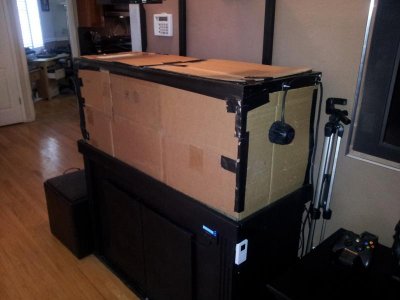ReeferGil
New member
I have a 75 gallon mixed reef tank that is about 9 months old. I've never had Diatoms, even during the cycle process. About two months ago I removed about 70% of my Chaeto as it was growing out of the sump and exposing itself to air. I added an automated feeder and went on vacation for 3 weeks while my LFS came to my house and did minor maintenance to the system. He believed the auto feeder was overfeeding from time to time. I ended up with Cyano and this goldish/brown algae. I used ChemiClean and killed off all the Cyano, but the algae remained. The algae is only in my sand bed and has hundreds of tiny bubbles on its surface. I've changed out my GFO, but still no results. The algae is going strong. I've attached some photos, any help would be great. I'm leaning towards this being Dino, but I'm not sure. Phosphates 0 (Hanna Checker)/ Nitrates 0 (API Test Kit). pH 8.10, temp 79 degrees. CA 440, ALK 9 dkh and Mag 1350. Pics below.
Vega LED Lights
MP40 pump
Koralia 1400 pump
(2) Nano pumps
Sump:
Chaeto
Reef Octopus skimmer
GFO reactor
Carbon bags
(2) Filter socks
Auto dosing BRS Alk/Calcium
Vega LED Lights
MP40 pump
Koralia 1400 pump
(2) Nano pumps
Sump:
Chaeto
Reef Octopus skimmer
GFO reactor
Carbon bags
(2) Filter socks
Auto dosing BRS Alk/Calcium



